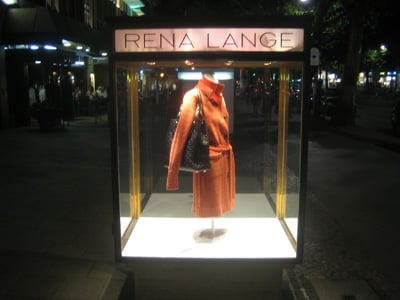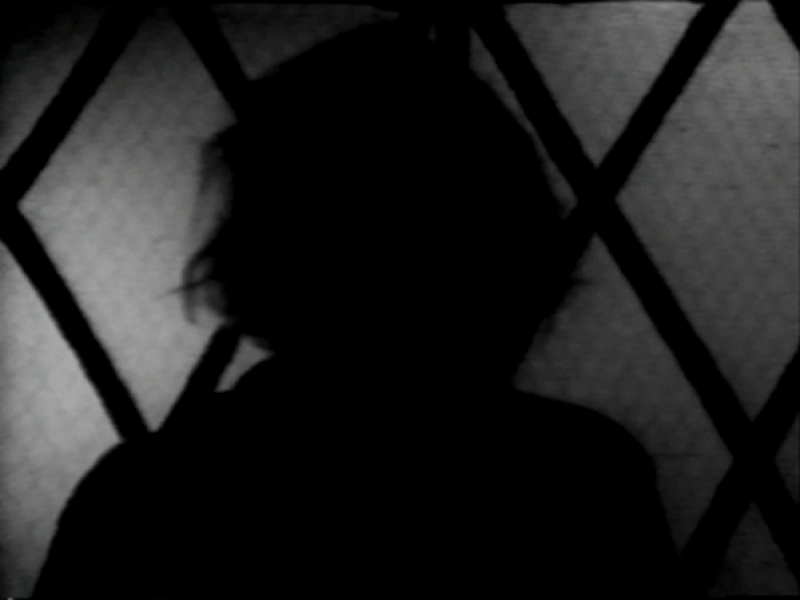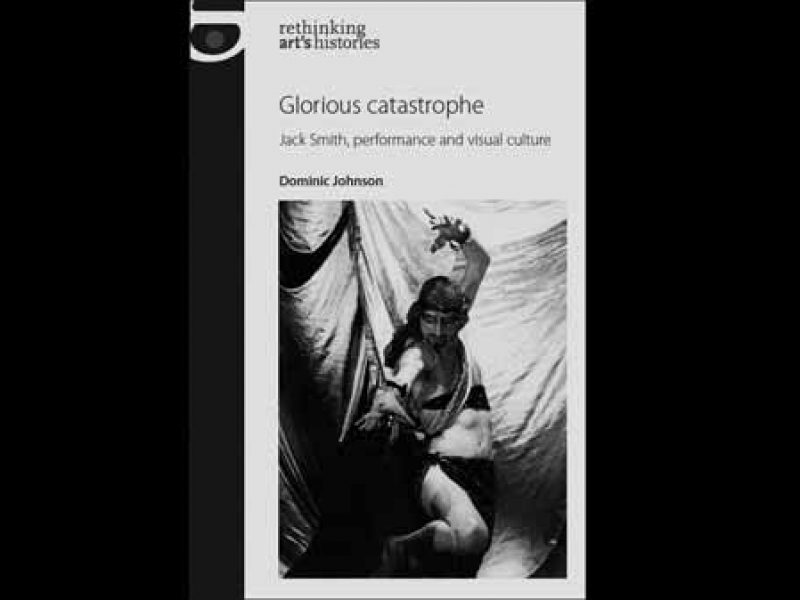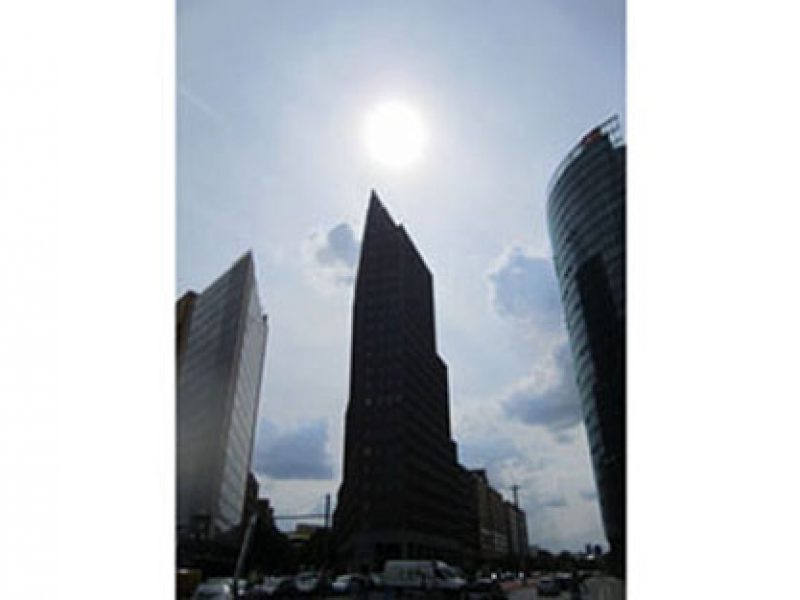Other people’s insights into their own psychological situation are just as boring as other people’s dreams. Nonetheless I have come to realise at the end of this stay in Berlin that while I have a passionate belief in and commitment to the idea (and often the reality) of the public at the same time I also have an abject aversion to the idea of groups of any kind. I don’t want to join them.
Thus in part my response to the opening of Live Film! Jack Smith! Five Flaming Days in a Rented World [scroll down for programme in English], for which there were queues around the block not seen at the Kino Arsenal outside of the Berlinale.
Well OK, not around the block: snaked back upon themselves in the dark grey metal cage that is the unfortunate foyer for this historically important cinema (which is so dimly lit at street level that it hardly looks like it’s there, let alone open) and emblematic of the organisation’s effective imprisonment in the Sony Centre at Potsdamer Platz – itself the horrible architectural ‘triumph’ of corporate towers so spitefully angled they seem to slice your body in two every time you pass them by. So much for reunification.
I mean, it should be a great thing that there are this many people wanting to see this work in this place. But at the time the frenzy and the late start (repeated throughout the five days) rather provoked anxiety and difficulty despite the fact that I too sometimes work with Kino Arsenal and the fact that they have been actually incredibly supportive – of experimental ideas, in taking risks and to me personally/professionally in ways that have been invaluable.
So I don’t want to write that from the outset that there was a separation between this curatorial and artistic project and the large and initially eager audience even though it felt like the project as a whole was something semi-private that the other few hundred of us in attendance had surprised by our presence. They were overwhelmed, we were more simply present.
Such a situation perhaps reflects how the event and especially its commissioned work (videos and performances – hosted during the event at the Hebbel Theatre) was developed: through a closed screening in March of all the films by Jack Smith that the Kino Arsenal exclusively hold, attended by the artists invited to make a work in response to them as well as others involved in their restoration and preservation.
I don’t understand how any conversation between contemporary practitioners about Jack Smith’s work could result – almost across the board – in pieces that failed to effect any kind of critical enquiry or translation of the original work into something more than images of men prancing about in women’s clothing (there’s a lot of this in Berlin) or bare-breasted women – pretty basic looky-likeys, often appallingly so – but that’s what we were consistently offered and by Marie Losier, Guy Maddin and Uzi Parnes and Ela Troyano in particular.
And these new works (frustrating, disappointing tokens) seemed always to occupy the prime programme slots, Smith’s films ironically enough marginalised to the first or last screening of the day or shown on the cinema’s second screen where you quite literally couldn’t get in the door for the people packed into its aisles, and over every inch of floor space.
Mario Montez, superstar (of Jack Smith and Warhol films), with a rekindled excitement for this new limelight volunteered to be wheeled out every single day of the event to either introduce a screening or appear in conversation – twice with the event’s co-curator Marc Siegel and once on a red leatherette sofa wearing a special 1940s-style floor length gown in black with silver sequins next to a day-glo Tony Conrad in pink and green.
His enthusiasm and generosity were in more abundance than his memory of the halcyon days of 1960s abject poverty and radical, underground artistic practice: and not because of the drugs. He only ever once inhaled and didn’t like it because hash makes you lose track of time. Mario’s line ‘Who wants to lose track of time?’ was perhaps more apposite than he realised.
In both conversations the very clever and dedicated Marc Siegel was incapable of overcoming the childlike awe to which he was reduced at meeting his hero, sitting with his feet turned inwards and mustering not much more than a pathetic appreciation of Mario’s outfits, sighing with drool-like reverence over how beautiful Mario looked in one pose after the next.
One became extremely aware of (bored by) the passing of time, of then and now, but also of every minute and second that watching this chat show took – and they were very slow ticks.
Thankfully academia was on hand despite us all in part agreeing with Penny Arcade’s denouncement (via what I thought was a confused assault on identity politics) of the relationship between the theoretical reading of Smith’s work, her experience of then and our common (sense) preference for being alive and not fossilised now.
The brilliantly thorough Warhol Chief Detective Callie Angell gave an informative account of his collaboration with Smith – the unrestored (labelled but unedited) film reels of Batman Dracula verbally identified shot-by-shot. And Douglas Crimp delivered a lecture on the peculiar dancer Paul Swan who shares the stage with Smith in Warhol’s Camp.
Crimp’s clarity of thought and excitingly clear line of argument and entertainment was like the blessed relief of clear water, even if both talks suggested that Smith’s status now should be confirmed by proximity to the already canonised.
All that said, three highlights:
First, a performance of the play The Life of Juanita Castro, in tribute to its writer and Warhol collaborator Ronald Tavel who tragically died on the plane journey back from Berlin to his home in the Philippines after the project’s March meeting.
The play stages a photo-call centred around Juanita and her life and times and what a photo-call this was, consisting of all the project’s participants and organisers from Ulrike Ottinger (who delivered a breath-taking impromptu a capella song to accompany Mario/Juanita’s final dance) to Tony Conrad via Diedrich Diederichsen (who as Raoul Castro gave it his all in repeatedly snogging Che Guevara with intermittent simulated fucking).
The younger generation involved included Pauline Boudry and Renate Lorenz and Oliver Husain whose other work I’ll show in the film programme at Whitechapel next spring. So of course I’m biased when I write that their videos here – and Husain’s especially – were sharper than most, but nonetheless they were.
Boudry and Lorenz continue their working relationship with the superlative, captivating performer Antonia Baehr here delivering Jack Smith quotations from cue cards dressed as an ordinary bloke in a scrubby field who seems to be discovering them – with gusto – for the first time. Comment enough on the others’ cross-dressing default position so the video’s cut-aways to Baehr dressed like a Jack Smith dandy at the zoo were not necessary.
Husain’s video was a work of expanded cinema. Two neo-drag entities entered the cinema and held a screen in front of the auditorium’s red curtain on which a video was shown that consisted entirely of zooming shots of veils revealing more veils, increasingly baroque in nature until a voice over addressed the audience directly.
As we’d been watching these ‘reveals’ it told us that what we hadn’t noticed was the screen itself which was moving slowly closer towards us. At which point we did notice this and the screen kept on coming, its supporters clambering over the cinema’s seats and audience’s heads, finally laying it down on top of half a dozen of them who had to struggle out of it as the cinema lights came on. A simple but successful deception distinct from the silly drag shows to which we were otherwise subjected. Real time.
Phew. And that was that. Goodbye Berlin. A week later I got on a plane to Kansas City to go and stand on one leg with my trousers round my ankles and walk out of an art gallery as part of the exhibition Ecstatic Resistance, for want of anything else to do.
Ian White is an artist and Adjunct Film Curator for the Whitechapel Gallery, London, as well as working on independent projects. He is the Facilitator of the LUX Associate Artists Programme and a writer. He curated ‘Tense Present’, a guided tour of artists’ film and video in the Luxonline collection.
Takahiko Iimura’s Filmmakers, which includes a portrait of Jack Smith, is available at the Lux Shop in related pages below.






